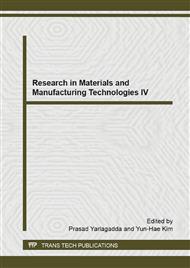p.497
p.507
p.511
p.515
p.522
p.526
p.530
p.534
p.538
Finite Element Modeling of Quenching Process Coupled with Phase Transformation Effect
Abstract:
This paper presents a sequential coupled thermo-metallurgical-mechanical finite element model for low alloy steel quenching which can be used to predict temperature history, evolution of microstructure, internal stress and distortion. The main efforts are to develop a series of subroutines which consider the latent heat released due to phase transformation and numerical implementation of a thermo-metallurgical-mechanical constitute equation. The effectiveness of developed computational method is confirmed by a immersion quenching. Simulations of immersion quenching demonstrate that transformation induce plasticity has significant effect of the evolution of residual stress, distortion and can not be neglected for low alloy steel during immersion quenching.
Info:
Periodical:
Pages:
522-525
Citation:
Online since:
December 2014
Authors:
Price:
Сopyright:
© 2015 Trans Tech Publications Ltd. All Rights Reserved
Share:
Citation:


